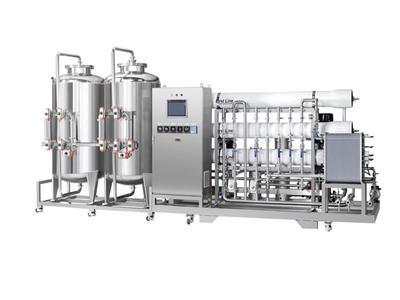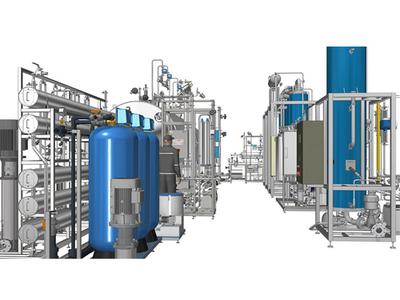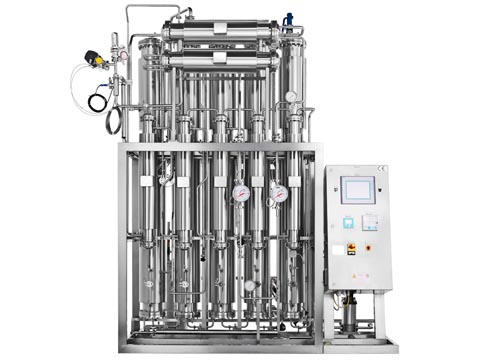No chemical contamination
Continuous resin electrolysis regeneration makes no need for very corrosive chemicals; if the former RO system is functioning properly, cleaning is required. Such as abnormal E-Cell's internal design is sufficient to cope with periodic chemical cleaning; E-Cell eliminates the capital investment in corrosive chemical regeneration equipment.
Such as: alloy valves, pipes, pumps, chemical storage equipment and other related components, eliminating the cost of installation, renewal and maintenance of these parts.
Continuous regeneration
Continuous regeneration replaces intermittent regeneration, which eliminates the need for backup ion exchange equipment. Each module can be chemically cleaned independently, and the remaining modules can take on short-term high flow rates.
Simple start-up/operation
Compared with the intermittent regeneration of mixed bed, regeneration operation is no longer required; electrodeionization EDI system is simple to operate, requiring fewer valves, but also without a lot of operator effort; operation requires only simple analysis and control.
Module replacement is convenient
The general life of the module is higher than 3-5 years; spare module storage is convenient. The outer aluminum plate can well protect the module, pipeline and food from damage. Replacement of EDI modules is simple and fast.
Higher purity of produced water
When the incoming water is lower than 40us/cm, the produced water is generally higher than 10~15MΩ.cm (25℃), which is not affected by the fluctuation of water production.
Higher recovery rate
If the hardness of water is less than 1ppm in terms of CaCo3, the recovery rate can reach 90%-95%; the concentration of chamber C wastewater is about 300-400us/cm and close to neutral when discharged.
This part of the water can enter the former RO system for reuse; if the water hardness exceeds 1ppm CaCo3 will produce scaling in the C chamber, thus affecting the work.
In this case, the process before entering the EDI electric deionization system should be adjusted to reduce the hardness, and the water source with higher hardness is recommended to use a softener.
Small footprint
The EDI system has a much smaller footprint compared to mixed bed at the same flow capacity, about 1/10. this customer-oriented design is achieved by eliminating the need for huge regeneration storage and wastewater neutralization systems.
No acid-base regeneration required
In mixed bed the resin needs to be regenerated with chemicals acid and alkali, while EDI eliminates the handling of these harmful substances and the heavy work. Protects the environment.
Continuous and simple operation
In the mixed bed due to each regeneration and water quality changes, so that the operating process becomes complex, while the EDI water production process is stable and continuous, the water quality of the produced water is constant, there is no complex operating procedures, the operation is greatly simplified.
Reduces the requirement of installation
EDI electric deionization system has a smaller volume compared with a mixed bed of comparable treatment volume, it adopts a building block structure, which can be constructed according to the height and flexibility of the site, modular design, so that EDI can be easily maintained when working.


